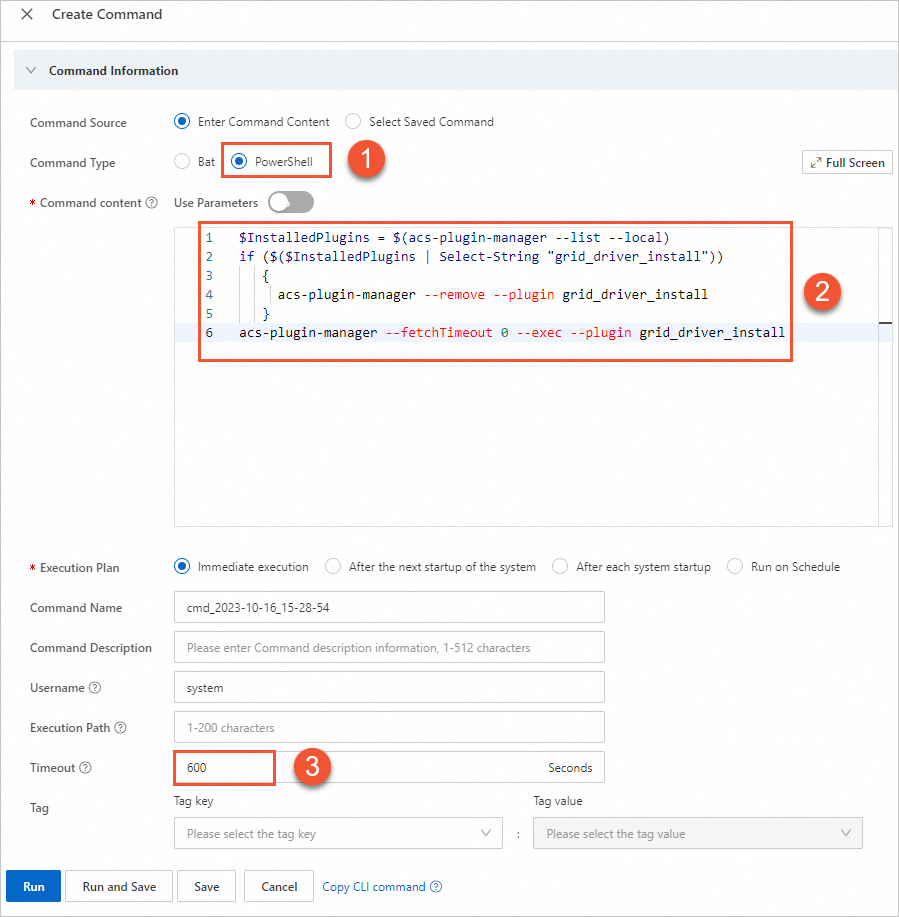In graphics acceleration and rendering scenarios such as OpenGL, Direct3D, and cloud gaming scenarios, GPU-accelerated instances with GRID drivers can improve the efficiency and performance of graphics rendering. This topic describes how to install a GRID driver on a GPU-accelerated compute-optimized or vGPU-accelerated Windows instance by using Cloud Assistant.
By default, Cloud Assistant plug-ins are installed when you create GPU-accelerated instances. If you want to use Cloud Assistant to automatically install a GRID driver, we recommend that you familiarize yourself with the concepts of Cloud Assistant. For more information, see Overview.
Supported instances
You can use Cloud Assistant to install GRID drivers only on GPU-accelerated Windows instances of the following instance families:
vGPU-accelerated instance families: vgn6i-vws, vgn7i-vws, and sgn7i-vws. For more information, see vGPU-accelerated instance families.
GPU-accelerated compute-optimized instance families: gn7i, gn6i, ebmgn7i, and ebmgn6i. For more information, see GPU-accelerated compute-optimized instance families.
Procedure
The following section provides an example on how to use Cloud Assistant to install a GRID driver on a GPU-accelerated instance. In this example, an ecs.vgn6i-m4-vws.xlarge instance in the China (Hangzhou) region is used.
Log on to the ECS console.
In the left-side navigation pane, choose .
In the top navigation bar, select the region where the instance that you want to manage resides.

On the ECS Instances tab, find the instance and click Run Command in the Actions column.

Install a GRID driver by creating and running a Cloud Assistant command.
In the Create Command panel, configure parameters in the Command Information section.
The following section describes key parameters. Use default values for other parameters. For more information, see Create a command in the ECS console.
ImportantConfigure the parameters based on the values that are provided in the following section. Otherwise, Cloud Assistant may fail to run the command.

① Command Type: Valid values: Bat and PowerShell. Select PowerShell.
② Command content: Enter or paste your command. Sample code:
$InstalledPlugins = $(acs-plugin-manager --list --local) if ($($InstalledPlugins | Select-String "grid_driver_install")) { acs-plugin-manager --remove --plugin grid_driver_install } acs-plugin-manager --fetchTimeout 0 --exec --plugin grid_driver_install③ Timeout: the timeout period for running the command on the instance. When the command execution times out, Cloud Assistant forcefully terminates the execution process. Set the value to 600.
NoteThe value of the Timeout parameter must be a positive integer in the range of 10 to 86,400. Unit: seconds. 86,400 seconds are equal to 24 hours. Default value: 60.
Click Run to run the Cloud Assistant command to install the GRID driver.
After you run the Cloud Assistant command, you can view the following information on the Instances tab in the execution details panel. The information indicates that no GRID driver is installed on the instance. You need to run the Cloud Assistant command only once to install the GRID driver.

Check whether the installed GRID driver takes effect.
Restart the GPU-accelerated instance.
For more information, see Restart an instance.
Connect to the GPU-accelerated instance.
For more information, see Connect to a Windows instance by using a password or key.
Right-click a blank area on your desktop. In the shortcut menu that appears, select NVIDIA Control Panel.
The following result indicates that the installed GRID driver is in effect.
References
If you purchase a vGPU-accelerated Linux instance and install a GRID driver on the instance, you can use the instance in common computing scenarios, such as AI scenarios. You can also use the instance in graphics acceleration and rendering scenarios, such as OpenGL, Direct3D, and cloud gaming scenarios. For more information, see Install a GRID driver on a vGPU-accelerated Linux instance.
A GRID driver can be automatically installed when you create a GPU-accelerated instance. For more information, see Create a GPU-accelerated instance.